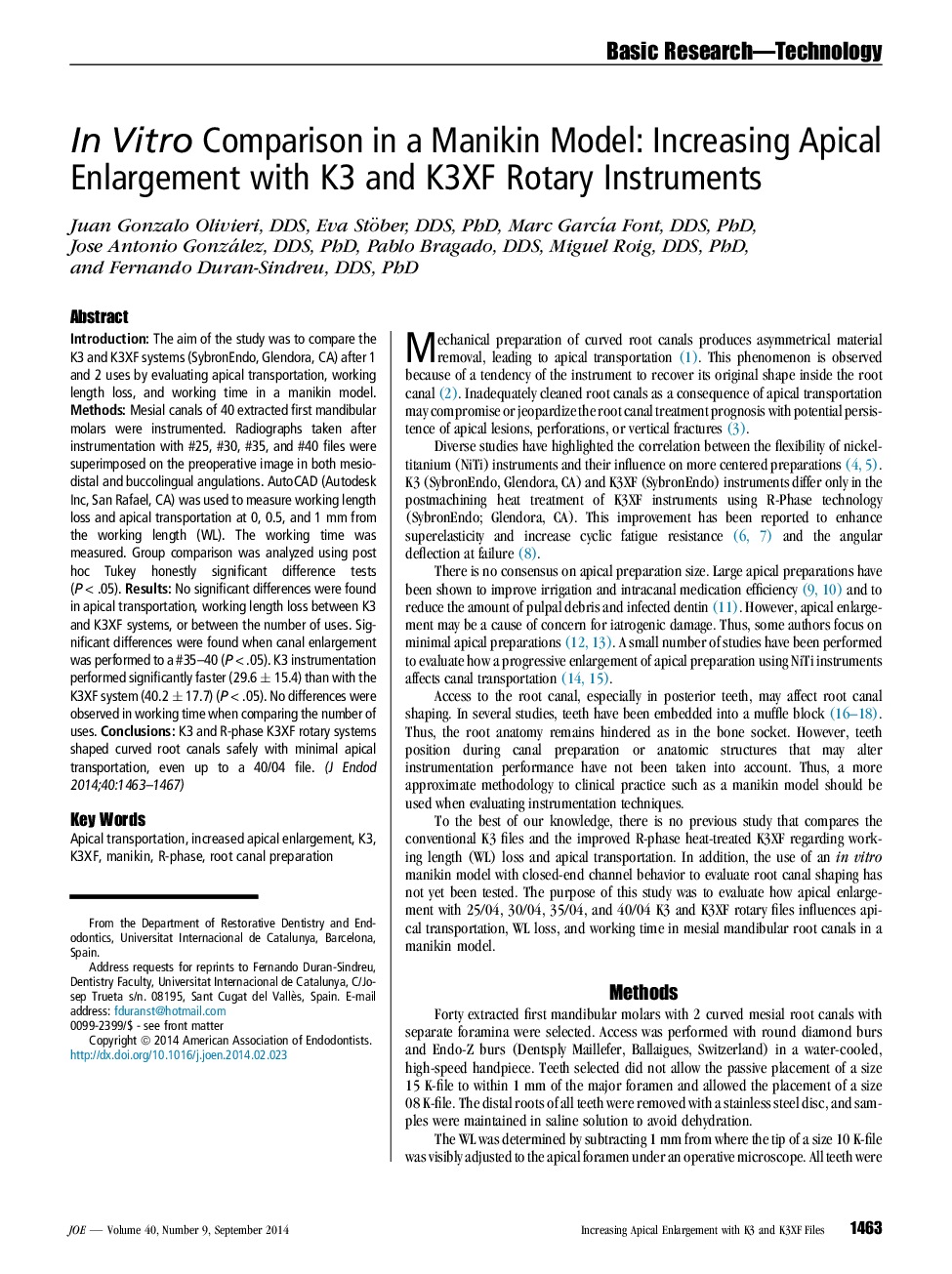| کد مقاله | کد نشریه | سال انتشار | مقاله انگلیسی | نسخه تمام متن |
|---|---|---|---|---|
| 3147770 | 1197375 | 2014 | 5 صفحه PDF | دانلود رایگان |

IntroductionThe aim of the study was to compare the K3 and K3XF systems (SybronEndo, Glendora, CA) after 1 and 2 uses by evaluating apical transportation, working length loss, and working time in a manikin model.MethodsMesial canals of 40 extracted first mandibular molars were instrumented. Radiographs taken after instrumentation with #25, #30, #35, and #40 files were superimposed on the preoperative image in both mesiodistal and buccolingual angulations. AutoCAD (Autodesk Inc, San Rafael, CA) was used to measure working length loss and apical transportation at 0, 0.5, and 1 mm from the working length (WL). The working time was measured. Group comparison was analyzed using post hoc Tukey honestly significant difference tests (P < .05).ResultsNo significant differences were found in apical transportation, working length loss between K3 and K3XF systems, or between the number of uses. Significant differences were found when canal enlargement was performed to a #35–40 (P < .05). K3 instrumentation performed significantly faster (29.6 ± 15.4) than with the K3XF system (40.2 ± 17.7) (P < .05). No differences were observed in working time when comparing the number of uses.ConclusionsK3 and R-phase K3XF rotary systems shaped curved root canals safely with minimal apical transportation, even up to a 40/04 file.
Journal: Journal of Endodontics - Volume 40, Issue 9, September 2014, Pages 1463–1467